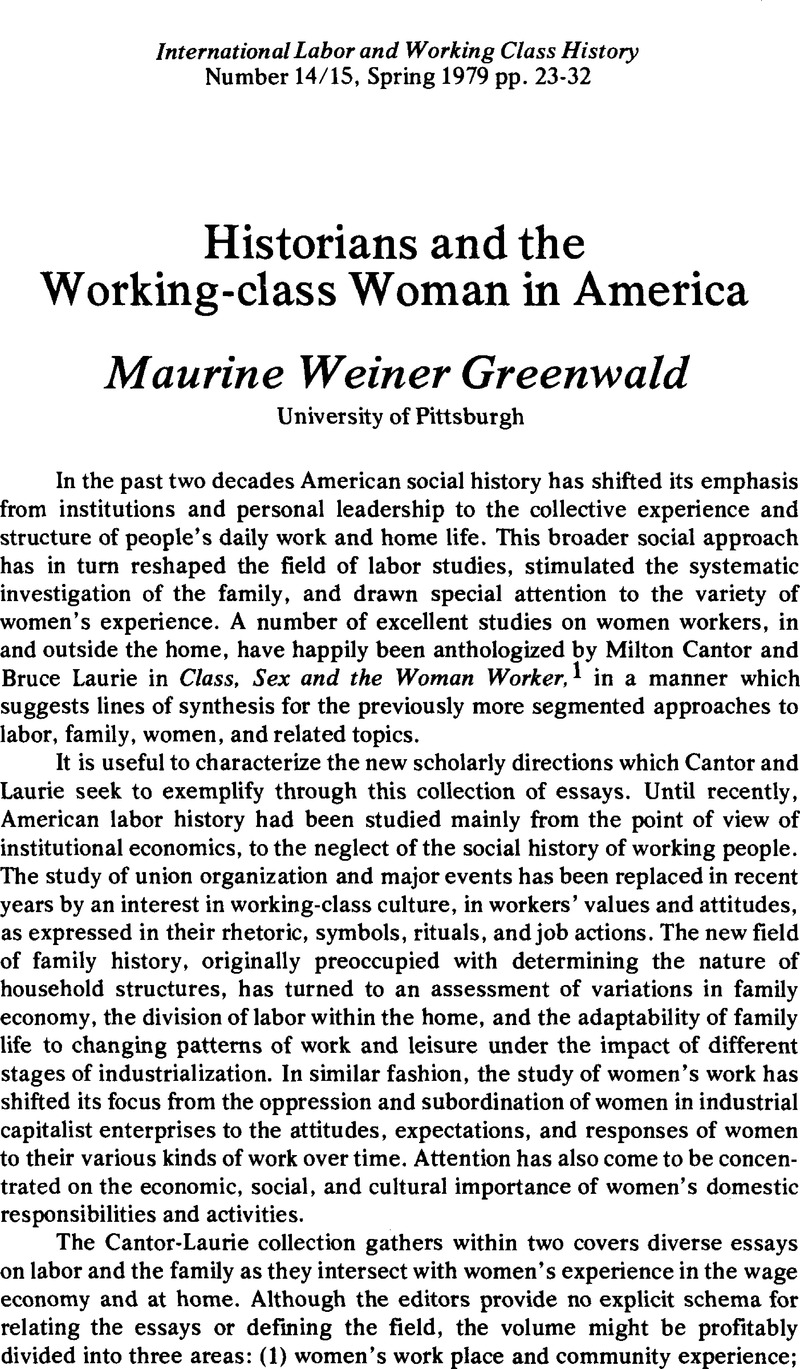No CrossRef data available.
Article contents
Historians and the Working-class Woman in America
Published online by Cambridge University Press: 16 December 2008
Abstract

- Type
- Essays
- Information
- Copyright
- Copyright © International Labor and Working-Class History, Inc. 1979
References
NOTES
1. (Westport, Conn.: Greenwood Press, 1977)
2. Benson, Susan Porter, “‘The Clerking Sisterhood’: Rationalization and the Work Culture of Saleswomen in American Department Stores, 1890–1960,” Radical America 12 (03–04 1978), 41–55;Google Scholar ‘‘The Customers Ain't God,’” (Paper delivered at the Social Science History Association Conference, Columbus, Ohio, November 4, 1978).
3. Callahan, Helen C., “Upstairs-Downstairs in Chicago 1870–1907: The Glessner Household,” Chicago History 6 (Winter 1977–1978), 195–209.Google Scholar See also Katzman, David, Seven Days a Week: Women and Domestic Service in Industrializing America (New York, 1978)Google Scholar for an extended discussion of mistress-servant relations with white and black domestics.
4. Kleinberg, Susan J., “Technology and Women's Work: The Lives of Working Class Women in Pittsburgh, 1870–1900,” Labor History 17 (Winter 1976), 58–72.CrossRefGoogle Scholar
5. Hareven, Tamara, “Family Time and Industrial Time: Family and Work in a Planned Corporation Town, 1900–1924,” Journal of Urban History 1 (05 1975), 365–389.CrossRefGoogle Scholar
6. The phrase “bonds of sex and barriers of class” is borrowed from Caroline Ware's introductory essay to the Cantor-Laurie anthology.




